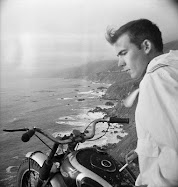There is no feeling more desolate than that which accompanies arriving on the scene of an accident and finding yourself overwhelmed by the circumstances. Worse yet is the feeling that comes with the realization that others at the same accident scene are acting with the best of intentions, but may be making existing injuries worse by following outdated conventional wisdom. And absolutely nothing compares with the helplessness you feel when the downed individual is your riding partner, spouse, or offspring.
The alternative to this sense of helplessness is possessing the knowledge and skills to act appropriately when everybody else is just guessing.
On February 2, 2008, I joined 16 other riders in an 8-hour class that emphasized skills, procedures, courses of action, and equipment essential to taking charge at an accident scene, and possibly saving the life (or lives) of the injured. Conducted under the aegis of Accident Scene Management Inc., the program is billed as “A Crash Course For The Motorcyclist” and offers participants a systematic approach to dealing with the unique aspects of motorcycle trauma.

Seventeen riders participated in this ASMI class.
Instructor David Riley gets the ball rolling.
The cost of attending this event was a very reasonable $70, and represents one of my better investments. Quite frankly, I paid the money just to learn the correct way to remove a helmet from a downed companion. I learned this and tons of other useful stuff besides. My purpose in writing this article is not to encapsulate the program, but rather to encourage all riders to take it.
Our instructors were a husband and wife team, Gail Riley RN/OEC Technician as lead instructor, and David Riley, First Responder as assistant instructor. The Rileys personify that rare kind of couple that play off each other’s strengths to build interest and presence into a class. While the program exuded an air of chumminess, it moved forward decisively and with precision. Both instructors engaged all 17 participants in lively dialogue that confirmed everyone was assimilating the information.
Equipment was the first item for discussion. Nearly all of the guys I ride with (and almost 100 percent of those in this class) carry some kind of a first aid kit on their motorcycles. You can imagine the surprise when most discovered the contents of these kits were lacking. At a minimum, each trauma kit should contain trauma sheers, a breathing barrier with a filter, 2 pairs of latex gloves, and multiple packages of sterile gauze, surgical sponges, gauze rolls, occlusive dressings, and tape.
Trauma sheers are incredible. These blunt scissors-type instruments can cut through a penny! They are especially useful for cutting through leather boots, armored clothing, and helmet straps. It was argued that many of the guys in this class had been riding for more than 30 years, and never had a need for trauma sheers. But the truth is that you may never need them, until you need them badly.
Your trauma kit or first aid gear should be carried on the right side of the bike for two reasons: a) if the machine is on the side stand, then this will be the side facing upward; and b) this is the side of the bike that would be facing away from oncoming traffic. Horst Oberst, a well-seasoned motorcycling veteran in the class, claimed he carried his gear on the right side because, “I always lay the bike down on the left.”
Other useful equipment included a decent flashlight or even Cyalume-type Glow Sticks. To my way of thinking, the only worthwhile flashlight is a “AA” Mini Maglite. You can get the standard version of this light from various retailers and pay between $9.50 and $12.00. The light is extremely bright, made of machined aluminum, and comes with a spare bulb in the base. They last forever. However, I have discovered that the vibration of a touring bike, as slight as it is, seems to have a negative impact on bulb filaments.

A Mini Maglite really stands out with the NiteIze Glow-Cone.
My newest acquisition is a “AA” Mini Maglite with an LED instead of a bulb. This arrangement is much brighter, has longer battery life (up to 20 hours), but does not come with a spare bulb as the LED is expected to last forever. The price is $24 from Maglite. Enter NiteIze, manufacturers of great flashlight accessories. They offer kits to convert existing Mini Maglites into units with 3 LEDS and a smart switch. The kit costs $10.
http://www.niteize.com/store/product_info.php?products_id=108
Another interesting piece of gear by NiteIze is a clever “Glow-Spot” orange sleeve, useful for directing traffic. This gadget is not much larger than the Mini Maglite and serves as useful storage container for the light. This is cheap at $5!
http://www.niteize.com/store/product_info.php?products_id=81
However, I found the NiteIze website to be incredibly aggravating when it came to ordering these.
The Rileys demonstrated several colors of chemical glow sticks. Green lasts the longest, but yellow is the brightest, for 5 minutes. Glow-Sticks are popular with kids at Halloween. One or two weigh nothing, have a shelf life like plutonium, and require no batteries nor bulbs.

Lead Instructor Gail Riley demonstrates a reflective harness.
Good riding gear as well as emergency equipment.
The class followed a four-part format termed “PACT,” which stands for:
• Prevent further injury
• Assess the situation
• Contact The EMS
• Treat the injured with life-sustaining care
Under “Prevent further injury,” the first objective is to render the crash site safe from additional accidents. This entails detailing folks to help stop or slow down traffic at least 250 feet from an accident. The second consideration is to your own health. This entails putting on your rubber gloves and covering your mouth and nose against blood, sputum, or vomit. Oddly enough, the same riding gear that protects you from the road (gloves, goggles and some kind of mask) can also protect you from bacteria and infection.
When do you move an injured rider? When movement is essential to treating them or guaranteeing their safety.
There were several demonstrations on how to correctly move an injured rider from underneath a bike or from a position that prevents you from assessing injury. The two preferred techniques were the log roll (using at least one other assistant) and the blanket drag. In each case, the person holding the injured party’s head calls the shots. These maneuvers required the utmost concentration of all participants, and the class practiced each technique several times.

Getting the accident victim ready for a blanket drag requires concentration.
There are six general principles of movement:
1) Keep the head, neck, and spine straight.
2) Move the head first, if possible.
3) Use 3-4 people if possible.
4) Move as little as possible.
5) Slide, do not lift.
6) Have one person be in charge of supporting a broken extremity if there is one.
To correctly “Assess The Situation” calls for making a spot evaluation of possible injuries. The nature of the accident and manner in which the rider hit the ground or anything else (a laydown as opposed to being ejected) has a great deal to do with the expectation of injury. The instructors painstakingly reviewed the cause of accidents, the nature of impact, and the different kinds of injuries you could expect to find.
In a best case scenario, the victim needs to be in the hospital within an hour. It is critical to alert emergency medical services. The next step, “Contact The EMS,” is to have someone with a cell phone call 911. But here’s a tip. If you are in a rural location, ask several people with different systems to call together. The reason for this is not every cell system has uniform coverage out in the boondocks. And it is very important to make sure the callers know where to send the EMS.
The final phase is “Treat The Injured with Life Sustaining Care.” The first consideration is breathing -- not bleeding. If the injured isn’t breathing, it won’t matter how he bleeds. Ask if they can breath. If they can answer, then they can breath. If not, you have to work fast.
Gail Riley used an automaton to demonstrate the highly effective “Jaw Thrust” method of opening an airway. The same device was used to illustrate effective mouth-to-mouth resuscitation. Participants had the chance to offer mouth-to-mouth to the machine, and to see if the unit’s chest rose and fell with each breath.

Gail Riley demonstrates the "breathing barrier."
It was here that we got a good look at the breathing barrier. This is device that allows you to fill another person’s lungs with air, without exposing your mouth to blood, vomit, or sputum. And these things are cheap too. In the classic case of a bad crash where the victim has stopped breathing and is bleeding, on person can resuscitate while the other stops the flow of blood.
The best was saved for last -- the removal of the helmet. When is a full-face helmet removed? A full face helmet must be removed if the individual is not breathing. This was a multistep operation that involved at least two people. It cannot be easily described and is best demonstrated by experts. But seeing it done, trying it, and studying the technique is yet one more level of preparation against the unthinkable.
As I said, this was the best $70 I’ve spent in a long time. The class was organized through the auspices of the Mac-Pac Eating and Wrenching Society’s chief sensitivity officer, David Vukovich. It was underwritten in part through the BMW Motorcycle Owners of America Foundation and the Markel Insurance Company. The Mac-Pac Eating and Wrenching Society greatly acknowledges the efforts of these two groups to raise motorcycle operating ability, related skills, and public awareness.
The BMW MOA Foundation has been looking to expand their emphasis on rider education activities by supporting Accident Scene Management Inc classes across the country. As a pilot project the MOA Foundation recently worked with the Airheads Beemer Club and Markel Insurance to provide financial support for conduct of two sessions of "A Crash Course for the Motorcyclist" in Pottstown, Pennsylvania. One course was held on February 1st for the Airheads Beemer Club as part of their SuperTech weekend event and the second was held the next day for the Mac-Pac. The Foundation/Markel Insurance support enabled a significant reduction in the cost per student for the course and encouraged excellent turnout for a weekend in the dead of winter. Almost 40 MOA members benefited from the course and are now more ready to assist fellow riders if they 'come a cropper' while out on the road.
I am compelled to report that I have no commercial affiliation with either organization, nor with any of the gear manufacturers or suppliers referenced in this story.
Epilogue:
The next day found me riding in questionable company. We headed down to the Tidewater Grille in Havre De Grace, Maryland for lunch. There were five Beemers in the crowd, representing ”K” bikes, the “GS’ machines, the “F” bikes, and a royal “LT.” Stopping for gas on the way back, I slipped on some crap and lurched the bike onto the gas pump.
“Don’t anybody move him,” screamed Kimi Bush from her GS. ‘I am qualified to remove his helmet.” The look in her eyes backed up her claim. Too bad I was still standing and the bike had only shifted a few degrees.
Free Quote Of The Month:
“There is something very satisfying about blowing your nose in a shop rag.” -- Dick Bregstein, after hitting 95 mph in 30º, on a BMW F800 with a tiny little windscreen, on 2/16/08
Jack Riepe
© Copyright Jack Riepe 2008 -- All rights reserved
AKA The Lindbergh Baby (Mac-Pac)
AKA Vindak8r (Delphi)
AKA The Chamberlain PS (With A Shrug)












6 comments:
Jack - great post. I've thought a lot about taking a similar class since I found myself in a situation on the Cherahola Skyway tending to a mutual friend of ours a couple summers ago. You've given me the little extra nudge I need to follow through with that. Keep on keepin' on...
Jack:
Another fine story. I wish I had been in attendance. I'll make the next one for sure.
Thanks Jack for the synopsis. I too wish I could have attended. I will try to find another class and I will pass this on to other MC folks who would benefit from it as well.
Jack,
How did MacPac find the people giving the class?
Don't believe your few sycophants. This sucked as bad as the book review. I can't believe you really (try to) make a living by writing - even if it is schlock low brow publicity crap. Signed A Nony Mous
I have to agree with Mr. A Nony Mous. Blogs should be interesting and entertaining. Yours is neither. Blech.
Post a Comment